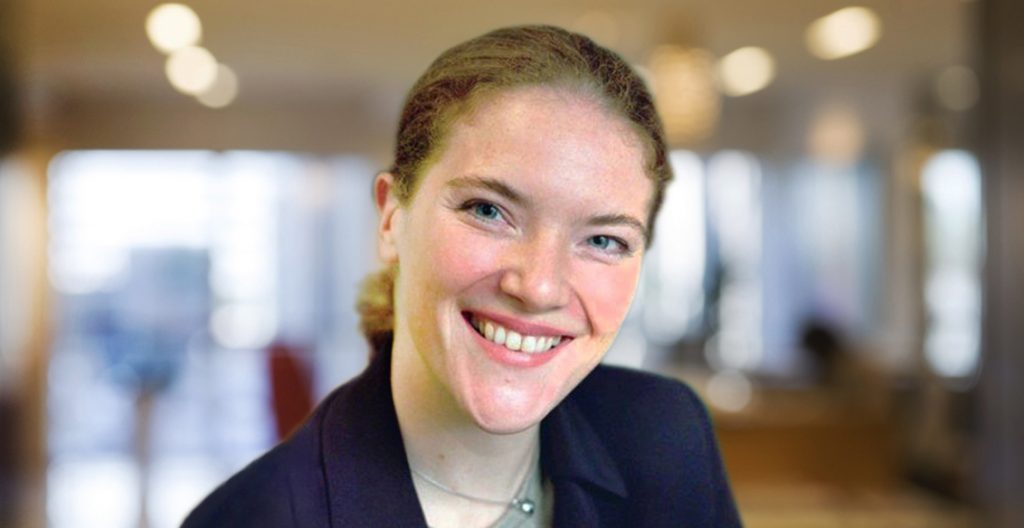
Border to Coast’s chief executive, Rachel Elwell, discusses the pool’s engagement mandate with Robeco, the governance of private markets investing and the appointment of Daniel Booth as the pool’s new chief investment officer.
Room151 (151): Can you start by telling us about your appointment of Robeco?
Rachel Elwell (RE): There are two aspects to it.
The first is that they are helping us to implement our corporate voting policy. We are fortunate enough to have a responsible investment policy and corporate voting guidelines which have been agreed with our 12 partner funds – we are seeking to implement that on their behalf, and have appointed Robeco to help us to do that.
The second aspect is the work we will be doing on engagement with Robeco. As well as the 12 partner funds, we are also members of Local Authority Pension Fund Forum (LAPFF), and will be looking to engage through that. In particular, we’re seeking to engage across our entire portfolio, beyond the UK, and working with Robeco will provide us with the global reach required to do so. There are also other ways in which we are looking to engage with our portfolio managers and the external managers that we appoint. For instance, we are signatories to the 30% club.
151: What do you ultimately hope to achieve through this engagement, and how will you be able to demonstrate cost benefits to the members of your partner funds?
RE: We believe that engagement, alongside voting and clarity with companies over what is expected of them, influences long-term investment outcomes. We therefore don’t want to do it in a pink and fluffy sort of way, but because we actually think it makes a difference to the investment outcomes for our partner funds.
One of the reasons that we chose Robeco was their very clear structure – they decided on the themes of engagement, understood the impact they wanted to have, and identified and measured against milestones. Seeing the effects of engagement generally takes longer, and it could take up to three or four years to begin to see an impact, but we feel that you should be able to set and achieve milestones along the way. There may have been cases in the past where investors have had great meetings, but from which never came any actual results that show value for money. We really like Robeco’s engagement structure, and are going to be working with them to ensure that we achieve something through all our engagement activities.
151: And what about unlisted entities? Private markets investments seem to be the flavour of the month in the LGPS at the minute, possibly the flavour of the coming years. Is the greater allocation to private markets investments consistent with trying to be an asset owner that has a meaningful impact on the companies it invests in?
RE: It’s a really big challenge which we’ve been looking into recently. We’re going through the review of our responsible investment policy, and have chosen to look at how we might expand the policy such that it covers more than just listed assets. It is currently going through governance including the Joint Committee, which is the chairs of each of our 12 partner funds, and then each of the individual Partner Fund Pensions Committees. We’ve got a meeting coming up in November and will be looking to take that revised policy to them for discussion. Judging by early discussions we’ve had, there is much support for being more explicit as regards to how we’re factoring responsible investment into all of our investments, rather than just focusing on listed equities as has been the case historically.
In terms of embedding it in private markets, I think ESG factors should always be a part of investment decision-making, regardless of what you’re looking at. That involves thinking about the risks and opportunities of each investment, making sure to take account of all wider risks beyond the financial. A big part of this is making sure the due diligence works, and that one is very clear about ESG issues and opportunities when looking at that assessment.
151: So you have an opportunity before you invest to find out as much as possible about the company and the way it operates, but presumably afterwards it is much harder to get that sort of information?
RE: Once you’re invested it is much harder to disinvest as these are generally illiquid holdings; you need to do as much as you would be doing in the public markets. Actually, we expect that we would not be doing a huge amount of direct investment in private markets to start with.
151: For that reason?
RE: No, not for ESG reasons, but because we’ve got to walk before we start running. We want to ensure we have the capabilities to do direct investment, which is a very different capability set. We are very fortunate that those who were transferred across from East Riding and South Yorkshire had already been doing co-investing for both funds, so we’ve got some really good experience in in that area, but there won’t be direct investments immediately.
151: Talking of your in-house talent, you recently appointed Daniel Booth as your first permanent CIO. I think it’s fair to say you didn’t rush to make an appointment.
RE: John Harrison joined us as the interim CIO and agreed with us that he would give us at least 12 months – we wanted to make sure we would get the right person.
151: So what did you see in Daniel that perhaps you hadn’t seen in previous candidates?
RE: I think there are certain things in particular about Daniel which really stood out for me.
Firstly, he had set up a very strongly-performing asset management arm for his previous employer that was multi-asset, global, and of a similar-size of assets that he would be looking after with us. Although he didn’t quite have the conventional UK local authority background in his experience, he had good things to talk about, was aware of the challenges that were there, and had valuable links to many different organisations which would be very helpful to us as we build.
The second is his very deep experience in private markets. He had risen through the ranks with that private market expertise, and then moved on to wider multi-asset. Given that that private markets are something that our partner funds were saying they wanted, it was really fantastic to find somebody who could bring that additional expertise. As I mentioned before, we already had Mark Lyon, Ian Sandiford and Peter Turnor, who had transferred to us from the internally managed partner funds and already gave us some very strong private markets experience across the LGPS – but being able to bring Daniel into that was really attractive.
151: How do you expect Daniel to develop the internally-managed investment capability in conjunction with the investments you outsource to other providers?
RE: There are some aspects of the investment world where it is possible for us to develop a strong team to do things internally, cost-effectively, and in a way that will deliver to our partner funds what they need. However, there are other issues, from scale to specialism, where it might make more sense to find a partner.
I am not looking to build a huge investing empire with lots of diverse internal capability. Each time we look at a new capability or asset class, we will make an assessment as to whether it is something that, with our particular skills and experience, we want to do ourselves or with an external provider. This underpins a lot of Border and Coast’s skills – even before I joined, they were already looking at the target operating model which would be based in Leeds, and understanding which parts of the full investment process we wanted to do ourselves, or with a partner. With Northern Trust, or Bloomberg, or Robeco, there’s been that same assessment as to whether we can do it ourselves cost-effectively and risk-effectively, or if it was better for us to do it with an external provider.
151: Let’s turn to the recent Local Authority Pension Performance Analytics Annual Report that PIRC produced. It was pretty critical, particularly in terms of whether or not pools are achieving the economies of scale that they were really there to do.
A sentence from the report says, “as pools try to accommodate as many funds’ product and manager preferences as possible, there doesn’t yet seem to be any real move towards simplifying asset structure, or consolidating investments, with most pools talking of running in excess of 20 sub-funds”. Is there a danger that what pools are doing is wrapping existing arrangements?
RE: I am not going to comment on other pools, as all pools are different. Our operating models are different; some have internal management, and some don’t; some have many partners, and some have very few; some have a regulated asset manager at the heart of their operating model, and some don’t currently.
PIRC is right to call that out – in order to succeed there does need to be compromise between the partner funds, and flexibility about how they decide to implement their strategies. One of the things that we have been talking to our partner funds about is: What are we really, in Border to Coast? We only exist for those 12 partner funds, and we are here to help the 12 partner funds achieve the best pooling for their needs. To a certain extent, therefore, what we develop and what they say they need go hand-in-hand.
We have thus far been very fortunate, worked hard collectively and made sure that, where people are comfortable making that compromise, we don’t launch funds unnecessarily. In the UK, we will be launching our first externally-managed fund later this year, and we have got agreement from the partner funds that we would launch one fund with a number of managers chosen by us – and hopefully that fund will provide the building blocks they need for their strategy. At the moment, there are broadly six UK managers and six mandates, and we are going down to one fund with three managers.
In global equity, which we are currently in discussions about and assessing how many funds need to be launched, there are currently 18 mandates and 17 managers. The key challenge there is what we need to launch in order to satisfy the asset allocation requirements, and how flexible people can be around that. I am hoping that we will get down to two or three funds.
151: So your skill as a selector of external managers is going to be absolutely key to your success?
RE: It certainly is a key strategic capability that we need to both be good at, and be able to blend. However, we are not looking to be a multi-manager, with a big list of managers that we use and churn. While selection is key, also important is building the relationship with the managers that we choose to partner with, and working with them to make sure they are delivering what we need to deliver.
151: I know you said you’re only there for the 12 partner funds but if another institutional investor came knocking at the door and said “we love the look of your business and would love to put some assets in”, would the answer be no?
RE: For the sake of clarity on the way Border to Coast has been set up – whether we have other customers or shareholders is not in our gift, it’s in the gift of the 12 partner funds, and that’s been clearly set out in our shareholder agreement. So I could neatly sidestep the question and say, “it wouldn’t be up to me, it would be up the shareholders”, but I think it is important.
For the foreseeable future, we have a lot on our plate just trying to make sure the 12 partner funds are happy. With £45-46bn of assets as of March 2018, it requires a lot to make sure that you’ve built an organisation capable of managing that size of assets.
Further down the line, perhaps we would. But as of now, part of our unique selling point is our strength in building those relationships, understanding our customers, and being there for those customers, so we would need to seriously understand that this is not just about asset-gathering, but also being there for our partner funds. Collectively between us – the company, the board, and the shareholders – we would need to think really hard before a decision was made to bring in anybody else.
151: As the leader of the organisation, are you happy with the progress you have made today, and what do you see as significant challenges ahead?
RE: I am absolutely delighted. I think back to the fact that I wasn’t actually working for the organisation 12 months ago, when we didn’t have an office, didn’t have any IT, didn’t have any providers, and didn’t have any staff. To now be sitting here today with a fantastic office and team, really strong relationship-building with our partner funds, £7bn of assets already under management and more expected to be coming in over the next six months – there’s nothing really not to be delighted with.
In terms of challenges, we’ve clearly got some big things to collectively agree on and work through, and which could prove to be stumbling blocks if we don’t keep communicating and building on those relationships. We are geographically diverse, so there’s a lot of commitment and investment involved in doing so. Pensions officers across our 12 partner funds have been incredible in their continued commitment to come to Leeds and spend time collectively building relationships, making sure they’ve got a good understanding, and making sure that their pensions committees have what they need.
Rachel Elwell is chief executive of Border to Coast Pensions Partnerships.











